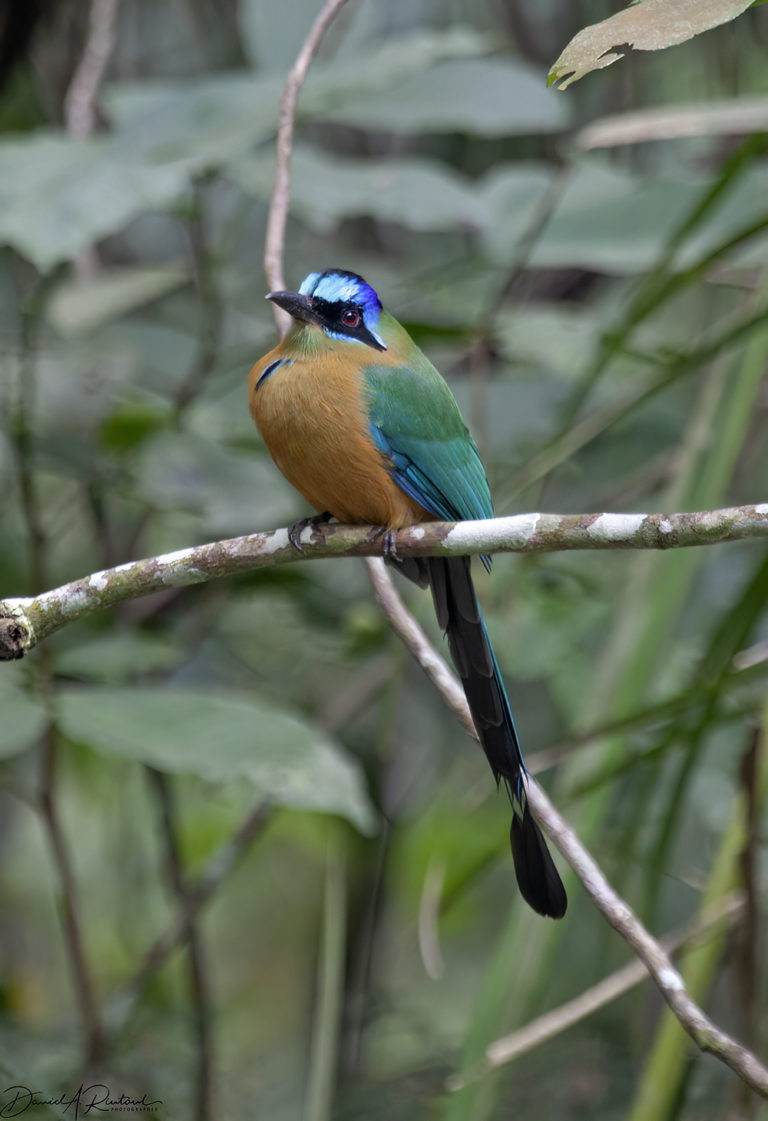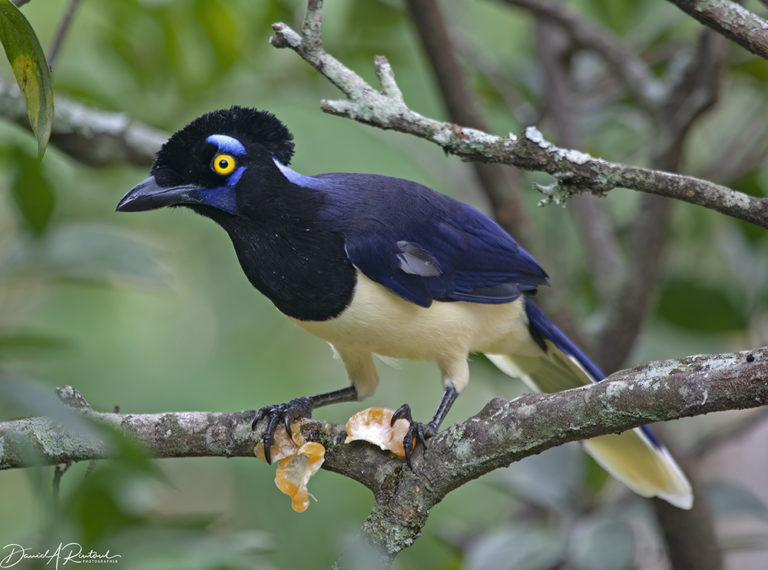On the Road is a weekday feature spotlighting reader photo submissions.
From the exotic to the familiar, whether you’re traveling or in your own backyard, we would love to see the world through your eyes.
On the Road: Week of April 5 (5 am)
Albatrossity – Brazil 2013, part 1
realbtl – Ones that (probably) Will Stay
?BillinGlendaleCA – Barker Dam
way2blue – Nivida Bat Cave, Isla Bastimentos, Panama
Steve from Mendocino – Mendocino Village – third set
? And now, part 1 of Albatrossity’s 2013 trip to Brazil.
Albatrossity
I have enough Brazil photos left for 5 submissions to On The Road, and figured I could post one of those every other week, interspersed with Spring in Flyover Country submissions, just for variety. And that also gives me some leeway if I don’t get enough good photos of spring birds and plants in any given week. So here is the first installment of a series of photos from Brazil in 2013. Next week, back to Flyover Country.
Our initial destination was Campo Grande, in the state of Mato Grosso do Sul, far in the southwest corner of Brazil. The biomes in that area are savannah and grassland with some forest cover (known as the cerrado), and a vast wetland area known as the Pantanal. We spent some time in both of those. Most of the pictures in this series will be birds, because both of these ecoregions are avian biodiversity hotspots. Just about every bird I saw was a new life bird!

We spent a night in Campo Grande, recuperating from the long plane trip, and in the morning headed west to the town of Miranda. Miranda has many attractions for the ecotourist, caves and waterfalls and snorkeling and, of course, birdwatching. There are an amazing number of parrots, both species numbers and population numbers, in this part of Brazil. Overhead flocks of Blue-and-yellow Macaws (Ara ararauna, aka Arara-canindé) were often seen, and sometimes, as in this image, they were flying through flocks of dragonflies.

One of the attractions near Miranda is an ecological park centered on the Rio da Prata (website in Portuguese here). This river is unique in my experience. Spring-fed by springs that come up under the sandy bottom of the river (short video of this underwater “sand volcano” action), it is crystal clear. Snorkeling in this river gives you an opportunity to view many fish, including this stunning sportfish known as the Golden Dorado (Salminus brasiliensis). Some members of our group even saw an otter floating along behind them, probably admiring these fine fish.

Another piscivore along these streams is the Black-collared Hawk (Busarellus nigricollis, aka Gavião-velho). This adult bird, with the deep rufous body and creamy white head, also shows the black collar that is part of its name.

Streamsides are also a great place to find Blue-crowned Motmots (Momotus momota, aka Udu-de-corora-azul). Despite the flashy plumage, these birds are hard to see, sitting immobile and inconspicuous in low foliage along the stream. Once you find one, however, you won’t forget it!

The forests of this region can be either humid or dry, and the dry forests host many interesting species, such as this Plush-crested Jay (Cyanocorax chrysops, aka Gralha-do-mato). Flocks of these guys move through the trees, and that blue eyebrow, cream-colored underside, and stiff plush crest make them very memorable as well.

One of the most endangered bird species in the world, the Hyacinth Macaw (Anodorhynchus hyachinthus, aka Arara-azul-grande), also lives in these forests. This is the largest parrot in the world, over 3 ft. long from beak tip to tail tip, and was long sought after as a cage bird. Strict protections have enabled the population to stabilize in the Pantanal in recent years.

Another iconic species is the Toco Toucan (Rhamphastos toco, aka Tucanuçu), familiar to you all from cereal commercials of your youth. These are pretty common in parts of this region; the first one I saw was in the city limits of Campo Grande when I went birding before breakfast there. And that huge bill is surprisingly nimble and adept; that’s a tiny berry of some sort in its bill, not a Froot Loop.

Yet another iconic species, a relic from Gondwanaland and a relative of the other Southern Hemisphere ratites such as emu and ostrich, this is a Greater Rhea (Rhea americana, aka Ema). Flightless, and large and tasty, these are common in parts of the region, but mostly extirpated where human population density is higher.

One of the other iconic birds of the region, and one that I really was looking forward to seeing, is the Red-legged Seriema (Cariama cristata, aka Seriema). In behavior and in diet it is reminiscent of the Secretary Birds found in Africa, this predator is the closest living relative of the aptly-named Terror Birds.

Finally here’s a bird that was not on my radar when i was reviewing the field guide on the long plane trip to Brazil, a Grey Monjita (Xolmis cinereus, aka Maria-branca). It’s in the flycatcher family, and that stunning red eye with that elegant gray, black and white plumage is quite a sight to see.

Van Buren
Love them all, but especially the Toucan.
Mary G
The plush-crested jay is right out of Pixar. Love them all, but especially him.
WayneL140
Outstanding, as always.
p.a.
Awesome! What was the season/weather? More temperate there than my mental image of Brazil, which is Amazon forests and densely populated coastal cities?
JPL
Imagine being alone on an island with a Seriema. Great pictures.
Laura Too
Great pictures and links. Thanks!
Albatrossity
@p.a.: That part of Brazil is still in the tropics, about the same distance from the equator as Cancun in the northern hemisphere. And having been to the Yucatan, I would say that the climate in Miranda is about the same as that in Cancun. Not oppressively hot, but you certainly knew that you were in the tropics!
raven
Damn
gvg
Your description of the sand volcano springs amused me. Florida has thousands of that type of spring. I didn’t realize other places don’t. I mean, I had read we had more, but I didn’t expect anyone to be amazed to see one. That is my normal. Summer weekend trips, most boating on rivers, tubing down spring runs in high school and college, I have seen thousands of springs and that is typically how they look. Of course we now have a pollution problem and our springs are not as clear as they once were once they join a river. That is getting to be a big issue with new laws and regulations.
We don’t have many parrots though. Brazil sounds nice once they get the virus under control.
Albatrossity
@gvg: I admit to not having spent much time in Florida, especially in the summer!
Most of the springs I am familiar with emerge from a hillside and run downhill into a stream. They are not filtered through sandy strata, usually limestone. So there is a lot of opportunity to pick up particulates before they get into anything resembling a river. It makes sense that Florida would be different in that regard. There are very few hills, and lots of sand!
MelissaM
Beautiful! I can’t get over how white the jay and toucan feathers are – I’m used to my dog being dingy after a trip outside.
Went for a walk with a friend in a local park with prairie areas, and saw a hawk, probably red tail of some sort, grabbing breakfast of a mouse or vole. He seemed unbothered by us watching from a relatively close distance. And I thought “Albatrossity would know just what type of hawk that is.”
JanieM
Imagine living in a place where those colorful parrots fly around! I wonder if you’d become blasé about it, then I remember that I’ve never gotten blasé about fall color, or lilacs, or etc.
Beautiful pictures, inspiring wanderlust as usual.
Chat Noir
As always, beautiful photographs and great descriptions. Thanks!
Mike S (Now with a Democratic Congressperson!)
Love the Neo-tropical birds and the great photos you take! Thanks
Betty
The motmot’s colors are just stunning. Great pictures and interesting details about the area.
J R in WV
I just have to wonder how tall in the red-legged terror bird?
Many years ago I was at the Innsuites Hotel in Tucson during the giant mineral and gem show held there in February most years. The hotel has numerous two-story blocks of rooms with paths through a well groomed Sonoran garden. Mineral dealers rent the rooms for the duration of the show, the first two or three weeks of Feb, and fill the rooms with cases and lights of fabulous minerals, gemstones, fossils, etc.
There are literally articulated fossil skeltons of dinosaurs for sale to museums (or rich folks) in one ball room — amazing event.
Anyway, as I walked around the corner of one of the room blocks, I saw a (cast replica, I expect) of a 12 or 14 foot high pterosaur-type terror “bird” with a 3 foot long spike of a beak, and my first impulse was to run, run away. Because I could see that the dinosaur was perfectly assembled to pluck the brain from a human-sized critter’s head, one plunge of the beak.
Worse than your photo of the terror bird, by far. So wish I had a picture of that giant monster!
J R in WV
@J R in WV:
ETA, to be clear, it was a cast fossil skeleton, which was if anything worse than a whole monster would be…
Albatrossity
@J R in WV: Yeah, terror birds are pretty aptly named, methinks!
The Red-legged Seriema is about 3 ft tall, as I recall. And interesting to watch. They can fly, but apparently prefer to run.
A woman from anywhere (formerly Mohagan)
@Albatrossity: Secretary birds were one of my favorites when we visited Tanzania, and the Motmot superficially reminded me of a Bee-eater (the colors). Great pictures and commentary as usual. Thanks.
droog
That Greater Rhea was pretty good in The Big Lebowski.
way2blue
These Brazilian birds are stunning! Would love to visit this part of the world. Thanks for sharing.